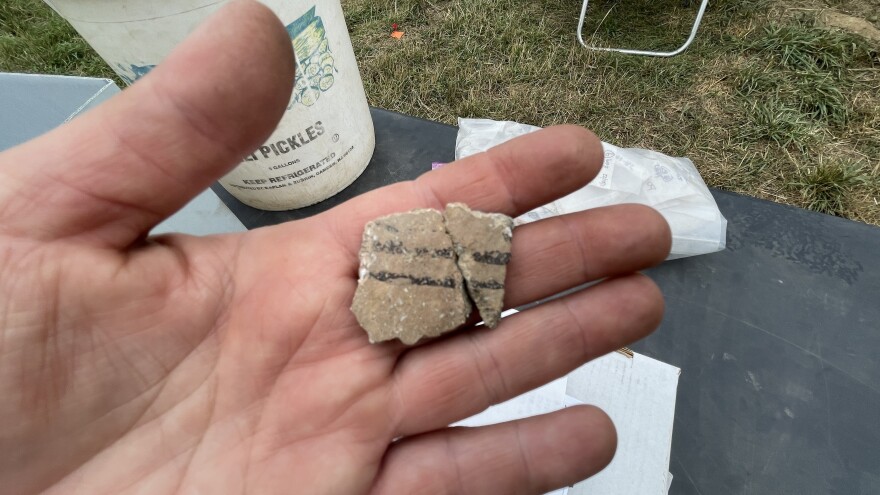The mysteries of life in Connecticut as an English colony is continuing to be unearthed at a 17th century farm in South Glastonbury.

The Hollister Farm in South Glastonbury started being investigated back in 2013. Over the last decade, the use of ground penetrating radar has shown artifacts lost to time.
“It is one of the best preserved early English Colonial sites that we have,” State Archaeologist Sarah Sportman said during a recent dig.
“Preservation out here is astonishing actually and one of the reasons for that is that it was a site occupied only until 1710 and there was no development that overprinted that,” she continued. “So, what you have after 1710 is simply used as agricultural fields and pastures. So, nothing else has ever been built here.”
Archaeologists have found three buried cellars and Native American pottery, showing possible trade between the settlers and the local Indigenous tribes.
In total, the site has revealed over 30,000 objects from food waste and fish scales, to local crafts, animal bones and items identified from other countries. That might signal the farm was a hub for trade locally and internationally.

The farm is still owned by a direct descendant of Lieutenant John Hollister, an English settler from Bristol in 1640. The current owner, who wishes to remain anonymous to protect the location of the farm, said they feel a responsibility for the land.
“Luckily there hasn’t been pressure to develop out here,” they said. “We’re near the river, you’re not allowed to build a house that kind of thing. But yeah, there’s a little responsibility you know. Some people want to come out and dig and they’re not with the state archaeologist and you know we don’t let that happen.”
Copyright 2022 WSHU. To see more, visit WSHU.







